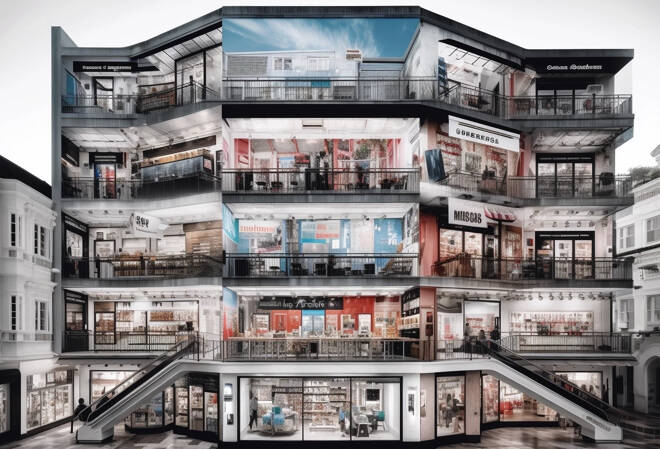Advertisement
Advertisement
UK Retail Sales Rise 0.9% in June Missing Forecasts; GBP/USD Pulls Back from $1.35
By:
Key Points:
- UK retail sales rose 0.9% MoM in June, easing recession fears and tempering BoE rate cut expectations.
- Warmer weather drove food and fuel sales higher, with fuel up 2.8%, the strongest gain since May 2024.
- GBP/USD dipped on softer-than-expected data.
UK Retail Sales Rebound, Challenging Dovish BoE Bets
UK consumers defied recession fears with an early summer spending spree. The rebound in spending also eased fears of a potential UK economic recession, though inflationary pressures remain a headwind.
Retail sales rose 0.9% month-on-month (MoM) in June, missing forecasts of a 1.2% rise but rebounding from May’s steep 2.8% slide. Year-on-year, retail sales increased 1.7%, up sharply from May’s 1.3% drop, potentially fueling demand-driven inflation.
According to the Office for National Statistics,
- Food store sales rose 0.7% MoM in June after plunging 5.4% in May.
- Warmer weather boosted automotive fuel sales, which jumped 2.8%, the largest since May 2024.
- Non-food store sales rose by a more modest 0.2%, driven by increased spending in department stores and clothing retailers.
- Meanwhile, non-store retailers saw sales volumes rise 1.7% in June, the highest level since February 2022.
- However, retail sales volumes were down by 1.6% compared with their pre-COVID pandemic level in February 2020.
Retailers attributed the rebound in food store sales to warmer weather.
Will inflationary risks force the BoE to hold fire despite rising joblessness?
Before today’s retail sales report, UK inflation and labor market data sent mixed signals. The annual inflation rate rose from 3.4% in May to 3.6% in June, with core inflation rising to 3.7% (May: 3.5%). Remaining well above the BoE’s 2% target, the upswing in inflation tempered rate cut bets.
However, a deteriorating labor market revived expectations of a BoE policy move. The unemployment rate rose from 4.6% in April to 4.7% in May, while wage growth slowed to 5%, down from 5.4% in April.
ING Economics remarked on labor market conditions and recent government policy, stating:
“April’s hike in UK payroll taxes and the National Living Wage are squeezing hiring but keeping pressure on inflation. We think the former is a bigger concern than the latter, but for now the bar for faster Bank of England rate cuts appears high.”
Today’s rebound in retail sales data may dampen expectations of softer inflation. A pickup in consumer spending may fuel inflationary pressures, potentially delaying a BoE rate cut.
GBP/USD Reacts to the Retail Sales Report
Ahead of the UK retail sales data release, the GBP/USD briefly climbed to a high of $1.35123 before falling to a low of $1.34860.
Following the UK retail sales data release, the GBP/USD fell from $1.35033 to a low of $1.34812. On Friday, July 25, the GBP/USD was down 0.10% to $1.34911, reflecting a market reaction to sales data that, while improved, missed expectations.
Looking Ahead
Investors now look to the BoE forward guidance ahead of August’s interest rate decision. Insights into the economic outlook, inflation, and the labor market will be crucial for the GBP/USD pair’s trajectory.
Stay updated here with real-time insights into global macro trends and central bank decisions.
About the Author
Bob Masonauthor
With over 28 years of experience in the financial industry, Bob has worked with various global rating agencies and multinational banks. Currently he is covering currencies, commodities, alternative asset classes and global equities, focusing mostly on European and Asian markets.
Advertisement
